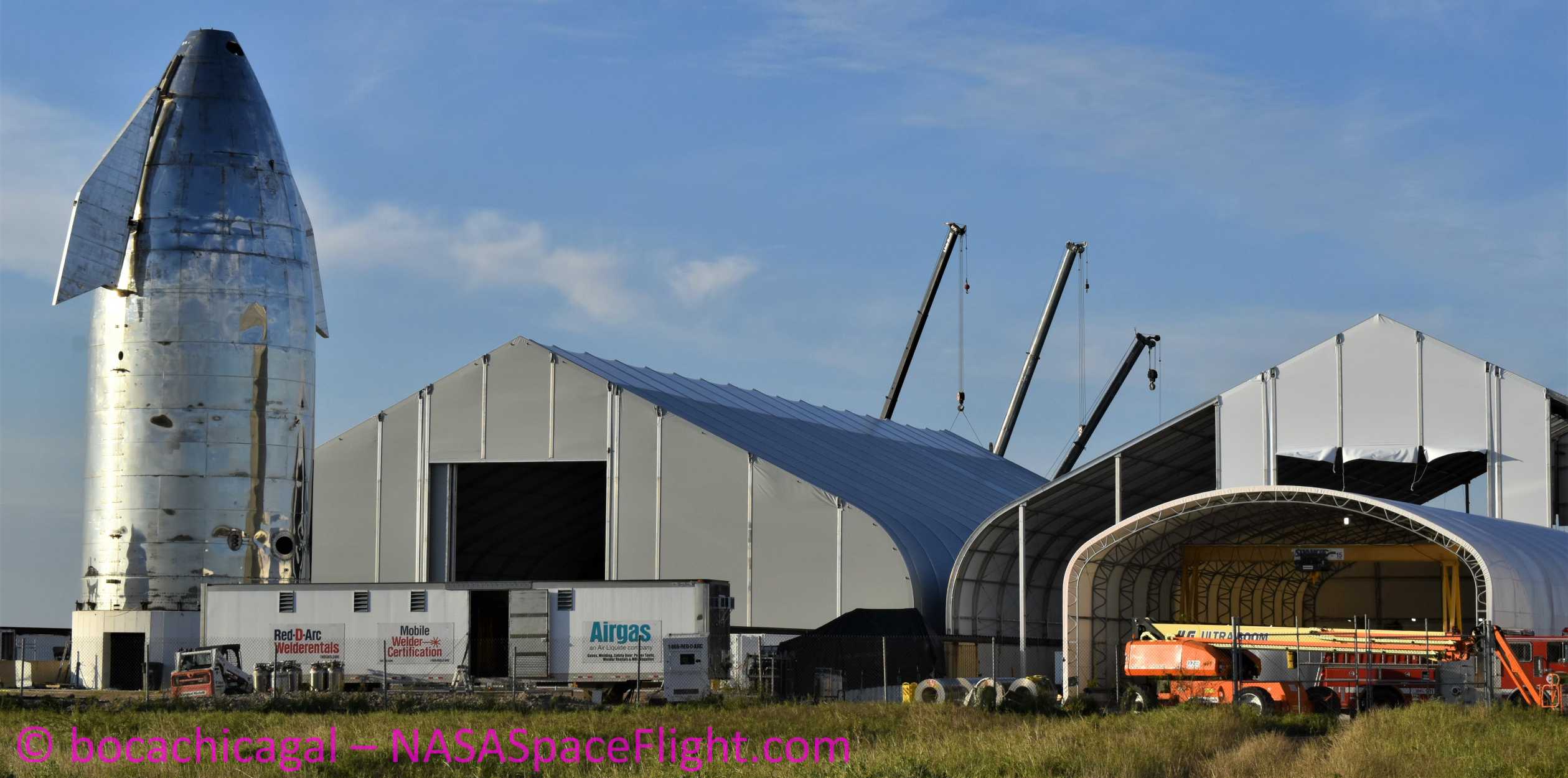
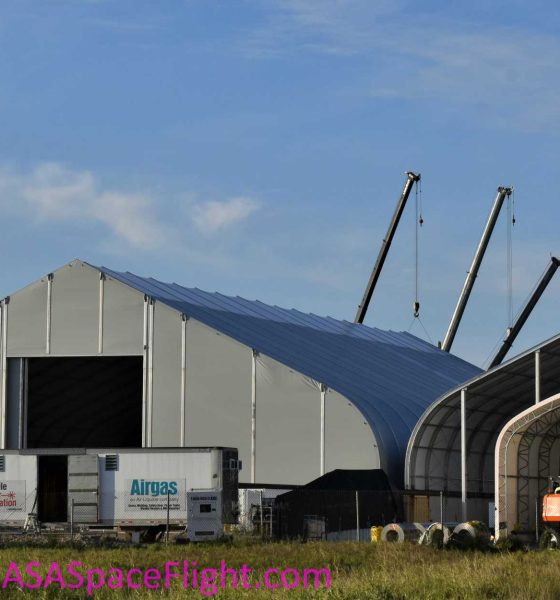
News
SpaceX ramps Starship hiring as Elon Musk talks Texas rocket factory's "awesome" progress
After several successful tests last month, Elon Musk says that SpaceX’s South Texas Starship team is looking to rapidly expand in order to aggressively ramp up Starship manufacturing in a sign that the nascent rocket factory is making excellent progress.
Almost immediately after SpaceX successfully wrapped up its first and second explosive Starship tank tests last month, the company’s Boca Chica, Texas presence started to take on a new atmosphere, reminiscent of the rapid progress made at a since-mothballed Florida Starship facility. Perhaps thanks to the fact that SpaceX’s Boca Chica Starship facilities are adjacent to a dedicated test and launch facility just a mile down the road, it’s looking much less likely that a similar fate will befall its Texas presence.
Instead, SpaceX’s successful Starship tank tests – intentionally destroying two massive propellant tanks – are a testament to the progress the next-generation rocket is making in Texas. In fact, SpaceX CEO Elon Musk has effectively stated that after the most recent tank test, the company is now ready to shift gears and start building the first space-bound Starship prototypes, while the last week or two of SpaceX’s visible Texas activities make it clear that that shift is already well underway.
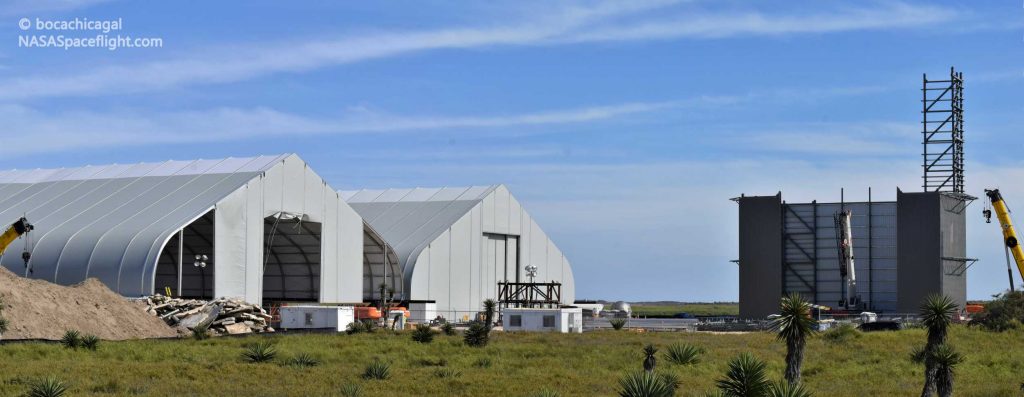
In simple terms, SpaceX now appears to be moving full speed ahead in a bid to manufacture, assemble, and test the first flightworthy, full-scale Starship prototypes. It’s worth noting that CEO Elon Musk has underestimated the challenge at hand several times in the last 18 or so months of Starship development, frequently suggesting that the first full-scale prototype of the spacecraft would be ready for a challenging flight test and maybe even its first orbital flights as early as 2019.
For a number of reasons, those ambitious targets were not met. To Musk’s credit, the executive is at least conscious of his tendency to be wildly optimistic when it comes to schedules and has effectively tacked on an asterisk that the schedules and deadlines he often publicizes tend more along the lines of “this time-frame is technically possible without breaking the laws of physics” than anything verging on pragmatism. With challenges as complex as those faced in spaceflight, let alone massive, fully-reusable rockets like Starship, it’s hard to be surprised that practical deadlines tend to be miles away from theoretically-possible minimums.
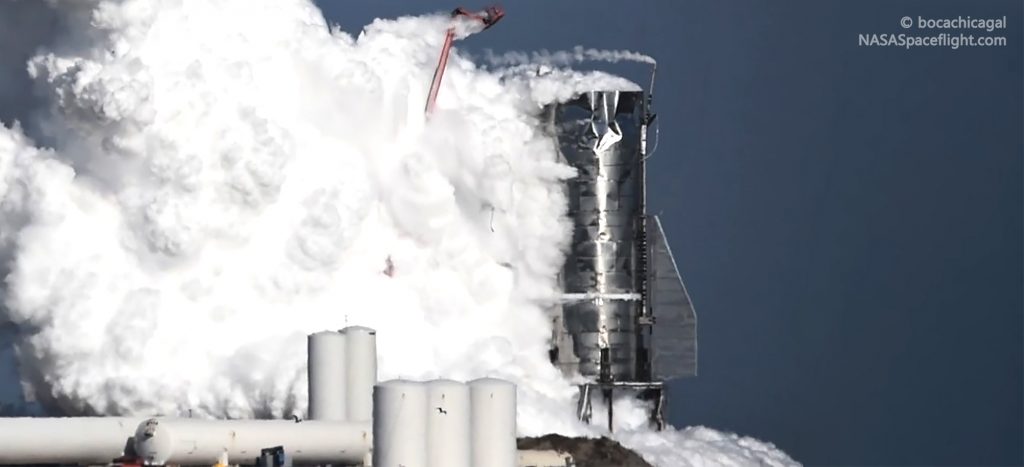
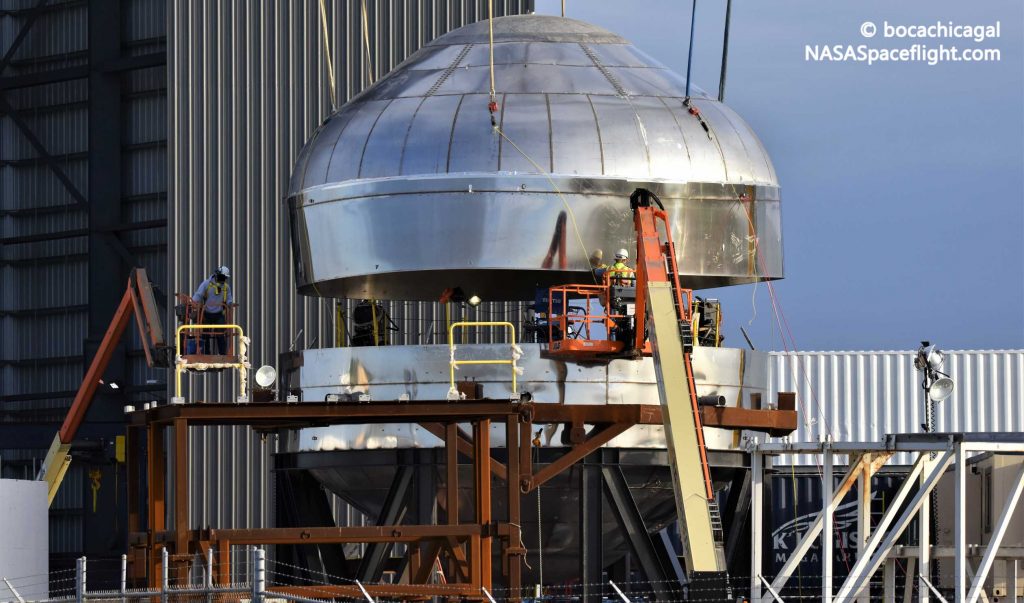
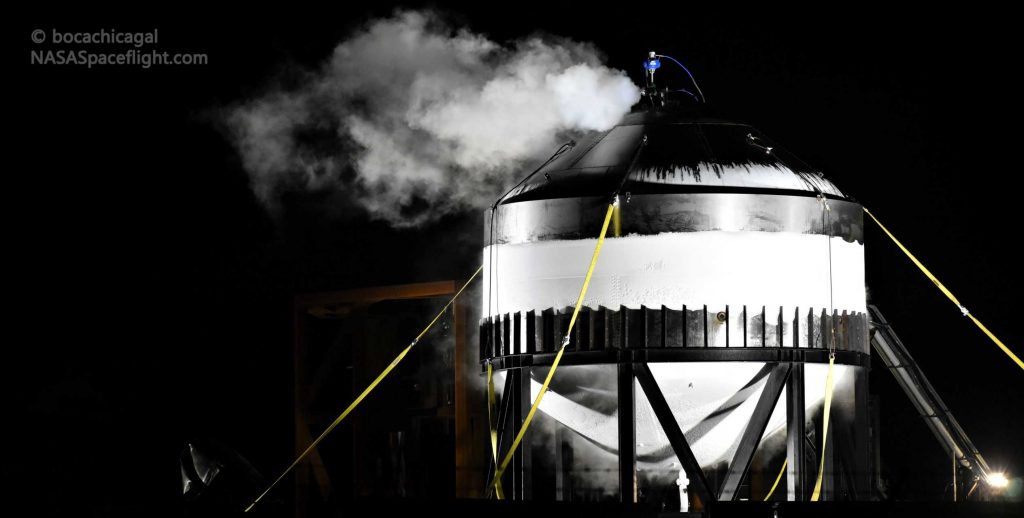
As such, it wouldn’t be unreasonable to feel a bit like the townspeople with a boy crying wolf, but there are arguably several reasons for optimism, this time around. Most importantly, as partially pictured above, SpaceX has completed four intentionally destructive tests with full-scale Starship hardware in just the last 2.5 months. Deemed unfit for flight, SpaceX pressurized Starship Mk1 with liquid nitrogen until it burst in November 2019, reaching an estimated 3-5 bar (45-75 psi).
SpaceX spent the following month upgrading both the methods and facilities used to build Starship prototypes in South Texas – a process that is still very much ongoing. However, two recent tests of Starship tanks built with some of those new methods and facilities have unequivocally proven that great progress is being made. The first ‘test tank’ managed 7.1 bar (105 psi) before it burst, while a second tank completed less than three weeks later reached 7.5 bar (110 psi) with water and 8.5 bar (125 psi) with liquid nitrogen on January 28th. Between those tests, Musk revealed that 6 bar was the bare minimum necessary for orbital Starship flights, while 8.5 bar would potentially offer the safety margins needed for crewed Starship flights.
In other words, SpaceX’s last two tank tests have effectively proved that – even with facilities and methods only partially upgraded – the company is ready to begin manufacturing the first truly flight-rated Starship prototypes. In response, Musk recently stated that he was going “max hardcore on” Starship design and production in Boca Chica and revealed that SpaceX would host a second South Texas jobs fair in three weeks to help rapidly staff its growing rocket factory.
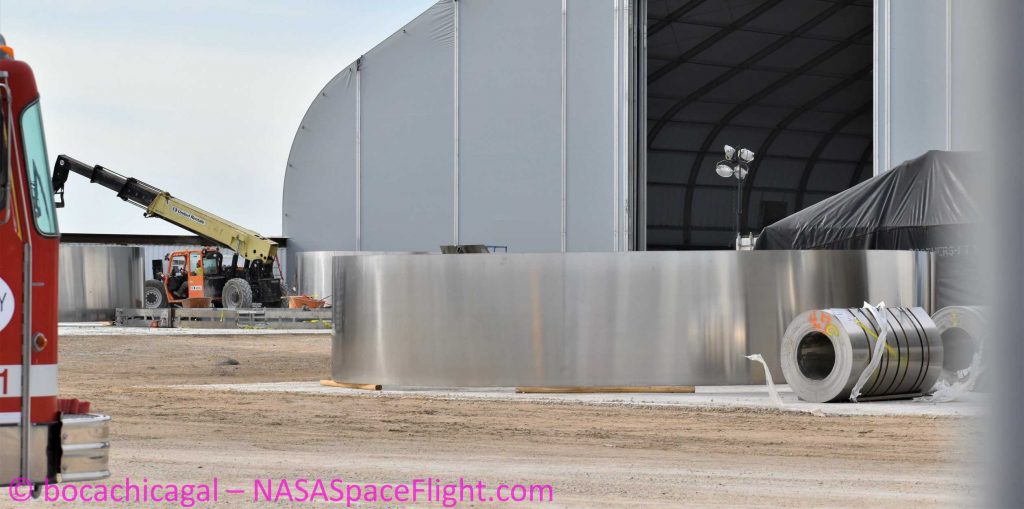

Looking at the progress SpaceX has made in just the last week, it’s hard to fault Musk’s brimming enthusiasm. Now breaking in new semi-automated welding machines, upgraded production equipment, and two massive sprung structures (i.e. tents), SpaceX engineers and technicians are churning out improved steel rings, tank domes (bulkheads), smaller propellant tanks, and more at a breakneck pace relative to the last year of Starship work. Additionally, at least six of those new rings have been stacked together in two sections, likely representing the effective birth of the first flightworthy Starship – ‘SN01’.
With SpaceX’s new enclosed facilities, much of its South Texas work is now hidden. Still, from what’s visible, it’s safe to say that the company is well its way to completing the first flight – and possibly orbit – worthy Starship prototypes in the near future.
Check out Teslarati’s Marketplace! We offer Tesla accessories, including for the Tesla Cybertruck and Tesla Model 3.

News
Tesla FSD fleet is nearing 7 billion total miles, including 2.5 billion city miles
As can be seen on Tesla’s official FSD webpage, vehicles equipped with the system have now navigated over 6.99 billion miles.

Tesla’s Full Self-Driving (Supervised) fleet is closing in on almost 7 billion total miles driven, as per data posted by the company on its official FSD webpage.
These figures hint at the massive scale of data fueling Tesla’s rapid FSD improvements, which have been quite notable as of late.
FSD mileage milestones
As can be seen on Tesla’s official FSD webpage, vehicles equipped with the system have now navigated over 6.99 billion miles. Tesla owner and avid FSD tester Whole Mars Catalog also shared a screenshot indicating that from the nearly 7 billion miles traveled by the FSD fleet, more than 2.5 billion miles were driven inside cities.
City miles are particularly valuable for complex urban scenarios like unprotected turns, pedestrian interactions, and traffic lights. This is also the difference-maker for FSD, as only complex solutions, such as Waymo’s self-driving taxis, operate similarly on inner-city streets. And even then, incidents such as the San Francisco blackouts have proven challenging for sensor-rich vehicles like Waymos.
Tesla’s data edge
Tesla has a number of advantages in the autonomous vehicle sector, one of which is the size of its fleet and the number of vehicles training FSD on real-world roads. Tesla’s nearly 7 billion FSD miles then allow the company to roll out updates that make its vehicles behave like they are being driven by experienced drivers, even if they are operating on their own.
So notable are Tesla’s improvements to FSD that NVIDIA Director of Robotics Jim Fan, after experiencing FSD v14, noted that the system is the first AI that passes what he described as a “Physical Turing Test.”
“Despite knowing exactly how robot learning works, I still find it magical watching the steering wheel turn by itself. First it feels surreal, next it becomes routine. Then, like the smartphone, taking it away actively hurts. This is how humanity gets rewired and glued to god-like technologies,” Fan wrote in a post on X.
News
Tesla starts showing how FSD will change lives in Europe
Local officials tested the system on narrow country roads and were impressed by FSD’s smooth, human-like driving, with some calling the service a game-changer for everyday life in areas that are far from urban centers.

Tesla has launched Europe’s first public shuttle service using Full Self-Driving (Supervised) in the rural Eifelkreis Bitburg-Prüm region of Germany, demonstrating how the technology can restore independence and mobility for people who struggle with limited transport options.
Local officials tested the system on narrow country roads and were impressed by FSD’s smooth, human-like driving, with some calling the service a game-changer for everyday life in areas that are far from urban centers.
Officials see real impact on rural residents
Arzfeld Mayor Johannes Kuhl and District Administrator Andreas Kruppert personally tested the Tesla shuttle service. This allowed them to see just how well FSD navigated winding lanes and rural roads confidently. Kruppert said, “Autonomous driving sounds like science fiction to many, but we simply see here that it works totally well in rural regions too.” Kuhl, for his part, also noted that FSD “feels like a very experienced driver.”
The pilot complements the area’s “Citizen Bus” program, which provides on-demand rides for elderly residents who can no longer drive themselves. Tesla Europe shared a video of a demonstration of the service, highlighting how FSD gives people their freedom back, even in places where public transport is not as prevalent.
What the Ministry for Economic Affairs and Transport says
Rhineland-Palatinate’s Minister Daniela Schmitt supported the project, praising the collaboration that made this “first of its kind in Europe” possible. As per the ministry, the rural rollout for the service shows FSD’s potential beyond major cities, and it delivers tangible benefits like grocery runs, doctor visits, and social connections for isolated residents.
“Reliable and flexible mobility is especially vital in rural areas. With the launch of a shuttle service using self-driving vehicles (FSD supervised) by Tesla in the Eifelkreis Bitburg-Prüm, an innovative pilot project is now getting underway that complements local community bus services. It is the first project of its kind in Europe.
“The result is a real gain for rural mobility: greater accessibility, more flexibility and tangible benefits for everyday life. A strong signal for innovation, cooperation and future-oriented mobility beyond urban centers,” the ministry wrote in a LinkedIn post.
News
Tesla China quietly posts Robotaxi-related job listing
Tesla China is currently seeking a Low Voltage Electrical Engineer to work on circuit board design for the company’s autonomous vehicles.

Tesla has posted a new job listing in Shanghai explicitly tied to its Robotaxi program, fueling speculation that the company is preparing to launch its dedicated autonomous ride-hailing service in China.
As noted in the listing, Tesla China is currently seeking a Low Voltage Electrical Engineer to work on circuit board design for the company’s autonomous vehicles.
Robotaxi-specific role
The listing, which was shared on social media platform X by industry watcher @tslaming, suggested that Tesla China is looking to fill the role urgently. The job listing itself specifically mentions that the person hired for the role will be working on the Low Voltage Hardware team, which would design the circuit boards that would serve as the nervous system of the Robotaxi.
Key tasks for the role, as indicated in the job listing, include collaboration with PCB layout, firmware, mechanical, program management, and validation teams, among other responsibilities. The role is based in Shanghai.
China Robotaxi launch
China represents a massive potential market for robotaxis, with its dense urban centers and supportive policies in select cities. Tesla has limited permission to roll out FSD in the country, though despite this, its vehicles have been hailed as among the best in the market when it comes to autonomous features. So far, at least, it appears that China supports Tesla’s FSD and Robotaxi rollout.
This was hinted at in November, when Tesla brought the Cybercab to the 8th China International Import Expo (CIIE) in Shanghai, marking the first time that the autonomous two-seater was brought to the Asia-Pacific region. The vehicle, despite not having a release date in China, received a significant amount of interest among the event’s attendees.








